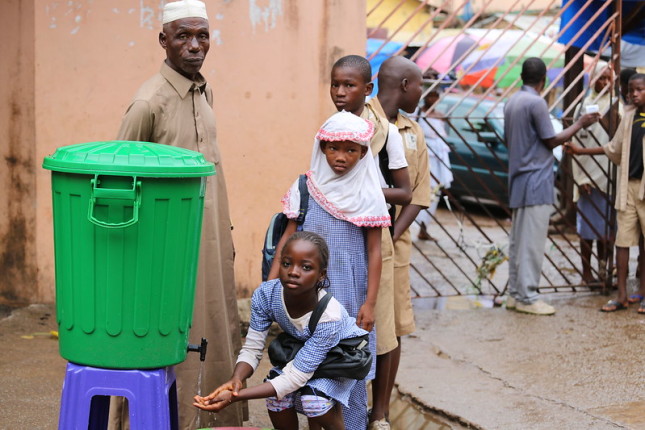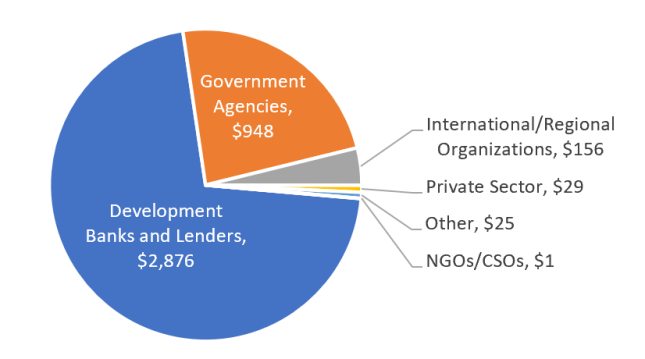-
Unlikely Heroes: We Neglect Water and Sanitation Service Providers at Our Own Peril

Six months into the World Health Organization (WHO) declaration of COVID-19 as a global pandemic, many countries, including the United States, are still struggling to contain the spread of the virus which, as of this writing, has taken 744,649 lives globally. Before mask-wearing was recommended as the simplest and most effective defense against contagion, epidemiologists and public health experts recommended regular handwashing with soap and practicing social distancing as fundamental to curbing the spread of the COVID-19 virus. Briefly it appeared as if WASH (water, sanitation, and hygiene) services were actually being accorded the importance they deserved. The critical need for water for handwashing, the millions who lack regular supplies of both water and soap, and the difficulties of social distancing in settlements where thousands share a single toilet with no soap were finally headline news.
Unfortunately, this attention was short-lived. And there is now a clear danger that the low revenues and increased costs faced by service providers, combined with growing economic hardships for local governments, will lead to a further contraction—not expansion—of basic WASH services. What’s less clear is just how pervasive and severe this danger is. Our research has uncovered large data gaps in tracking aid funding flows for WASH in general. It is also unclear what proportion of WASH funding is dedicated to service providers, who may be experiencing financial losses as high as 70 percent due to the pandemic.
Importance of WASH Services during and after COVID-19
Many service providers have detailed disaster management and response plans prepared for safely resuming services following catastrophes; others follow guidance issued by the WHO and other international agencies. Priorities in these plans include securing WASH for healthcare facilities; ensuring access to households who do not have connections to piped water or who can no longer pay their bills; maintaining supply of inputs, especially chlorine to disinfect water; treating wastewater adequately; and above all, keeping essential workers safe and healthy.
These measures come at a high cost for water service providers in developing countries, who even under normal circumstances are often unable to meet their operating expenses and rely on a combination of government and donor support for ongoing operations and extension of services. One can only assume that their operating losses have grown as they serve larger numbers of people at a higher cost, with lower bill payment. As a reference point, U.S. water and wastewater utilities expect to see a funding shortfall of $27 billion USD because of COVID-19. DC Water anticipates a shortfall of $50 million USD this fiscal year and a $100 million USD shortfall next fiscal year. A recent financial analysis of three water service providers in Kenya suggested that they needed “$1.4 million to continue operating for the next six months and without help would have to cease operations by September.”
For developing countries with low municipal revenues, water service providers have no fallback if they run out of money. This has grave ramifications for not just health security, but broader security as well. Recognizing this, we’ve been trying to track actions taken by utilities and the funds allocated to them in the wake of the pandemic. Analysis of eight prominent databases suggests that WASH is not being prioritized. Or, at the very least, it is not being properly documented.
COVID-19 Funding by Issue Area (USD)
Financing Water Services during COVID-19: Knowledge Gaps
The OECD-DAC Database and the WHO‘s TrackFin Database are not up to date with 2020 data; and while the WASHfunders map covers grants in 2020, it is unclear what proportion of this funding is earmarked for COVID-19. Most grant-makers appear to have augmented ongoing projects. The Alliance for Financial Inclusion (AFI) Members COVID Response Tracker lists information on support from development banks, but it is unclear how much money is allocated to water service providers specifically.
The International Monetary Fund (IMF) and the World Bank both have up-to-date records of their country projects during COVID-19. The IMF is supporting 80 countries with approximately $88 billion USD in financial assistance. It is difficult, however, to determine how much money is being allocated to support WASH activities generally, or to utilities specifically. On the IMF’s COVID-19 Financial Assistance and Debt Service Relief Tracker, “water” and “utilities” are only mentioned a handful of times.
The World Bank‘s map of projects shows 130 projects in 97 countries earmarked for COVID-19, totaling approximately $6 billion USD. Of these, approximately 45 projects mention support for water service providers, water utilities, or utilities in general. While assistance to water service providers might be occurring on the ground, the primary databases covering WASH and/or COVID-19 responses do not comprehensively include this information.
The most comprehensive information on funding flows comes from Devex’s Global COVID-19 Funding Dashboard. Additionally, the Global Water Operators Partnerships Alliance (GWOPA/UNHABITAT) has an up-to-date mapping of utility responses, but specific information on financial flows is not always documented. According to the Devex Dashboard, $3.7 billion USD is currently allocated for WASH activities as they relate to the COVID-19 pandemic. However, funding for WASH only represents 0.018 percent of total COVID-19 funding recorded by Devex, which is wholly inadequate to address the world’s growing health challenges.
Contributions to COVID-19 and WASH by Donor Type (Million USD)
Data for Building Back Better
The absence of consistent reporting of COVID-19-related losses from utilities/providers and governments, as well as information on how emergency donor funds are being allocated or spent presents considerable challenges. But there are two major opportunities to build back better in this regard:
- Prioritize WASH Investments within Health Response Programming
While COVID-19 and other recent outbreaks such as Ebola have shown that WASH is critical to disease control, most governments do not see WASH service providers as part of the healthcare system response. In the medium term, one priority of governments and donors must be to create mechanisms whereby water and sanitation provision are viewed as integral to human health and safety and accorded the same priority in budgets.
- Document Water Utility Activities to Inform Sustainable Planning
Strengthening utility governance and accountability have been donor priorities for a long time, but these have taken on a greater significance during the pandemic. Requiring service providers to report on how they used emergency funding, how many more customers, especially among the poor, they reached, how much more water they supplied, and the resources they need in the medium to long term to continue to serve an expanded customer base, is a first step in allowing them to leverage greater sources of future capital. The COVID-19 crisis has the potential to foster creativity and innovation among water service providers. To achieve this, data-informed responses are critical.
Reliable and affordable WASH is key to public health and safety, and water and sanitation service providers are the often-overlooked heroes in this regard. Supporting them to not just maintain but improve services, especially to the poorest and most vulnerable populations, is critical to managing and recovering from the pandemic.
All statistics and graphics reflect research gathered on August 12, 2020.
Tanvi Nagpal, Director of the International Development Program at JHU-SAIS, has more than two decades of experience in policy research and program management in East Asia and sub-Saharan Africa. Nagpal has held positions at the World Bank and non-governmental organizations and has advised leading foundations on their philanthropy in water and sanitation. Her current research focuses on sustainable and equitable water, sanitation, and solid waste delivery.
Alayna Sublette is a second-year MA student studying international development and economics at JHU-SAIS. With several years of experience working for development non-profits, she is passionate about finding more sustainable ways to finance development solutions.
Sources: Alliance for Financial Inclusion, American Water Works Association & Association of Metropolitan Water Agencies, CNN, Devex, Devex Tableau Public, Ethekwini Municipality, Global Water Operators’ Partnerships Alliance, Globalwaters.org, International Monetary Fund, JAMA Network, Johns Hopkins University & Medicine Coronavirus Resource Center, Organisation for Economic Co-operation and Development, Quartz, Stat, The New York Times, ThePrint, The Water Council, The World Bank, Urban Institute, US National Library of Medicine National Institutes of Health, WASHfunders, World Bank Blogs The Water Blog, World Bank Group Global Water Security & Sanitation Partnership, World Bank Group Water Global Practice, World Health Organization
Photo Credit: Students washing hands before entering their classroom, courtesy of Tabassy Baro, Global Partnership for Education – GPE.
 A Publication of the Stimson Center.
A Publication of the Stimson Center.








